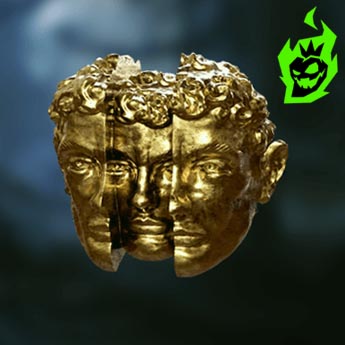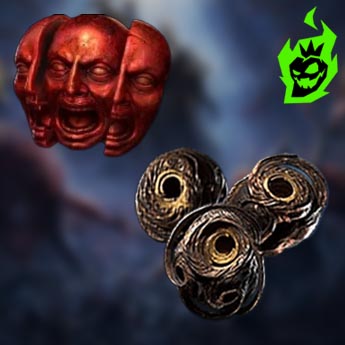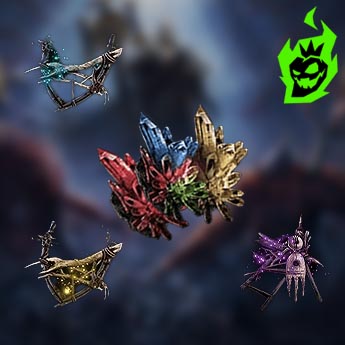Path of Exile 2 Orbs Guide: Mastering Currency for Endgame Success
Path of Exile 2 has a deep currency system where Orbs are the key to gear upgrades and item crafting. Each Orb interacts with different affixes, item tiers and hidden numeric values which makes the game’s loot-driven progression ever evolving. By understanding how these currency pieces work you can more easily modify your gear for map runs and boss battles. Many exiles dedicate entire stash tabs to sorting and managing Orbs, it’s how important it is to have well planned item upgrades. This guide covers common Orb types from low level to endgame strategies so every player can find their way to better gear.
For those who struggle to get hard to find Orbs or find random drops too unreliable the ChaosBoost service offers an Orbs Boost option that makes farming currency a lot easier. Many builds rely on a set of Orbs to fill critical gear slots with resistances, life or offensive stats. When you get unlucky and don’t get the right Orbs some players opt to get outside help to boost their currency stash. This can save hours of repetitive content but balancing personal progress and outside help is a personal choice. In any case knowing how each Orb works is key to success in Path of Exile 2.
Orb of Transmutation, Orb of Augmentation, and Early-Game Crafting
Orb of Transmutation and Orb of Augmentation are used in the early stages of gear progression, to convert normal items into magic items and add extra affixes. They are very valuable when dealing with bases that already have a good prefix or suffix like increased movement speed or core resistances. Many players look for good rolls at lower item levels and then apply these Orbs to squeeze out more stats until better currency is available. Observing item level is key: if an item is below certain thresholds the highest affix tiers are locked. The following table shows how these Orbs work with basic gear:
| Orb | Function | Typical Usage Level |
|---|---|---|
| Transmutation | White → Magic | Levels 1–40 |
| Augmentation | Adds 1 affix to Magic item | Levels 10–50 |
Before you invest these Orbs into an item:
- Check Current Stats: Look for a strong prefix or suffix (e.g. 20–30% movement speed on boots).
- Verify Item Level: Make sure the item level fits the affix tiers (often around 40+ for moderate rolls).
- Consider Other Gear: Is a quick upgrade worth the Orb cost or should you wait for a better base?
These points will guide your early crafting decisions and prevent wasteful currency usage on subpar items.
Most players outgrow these low tier mods within a few acts but they are a stepping stone for interim upgrades. By combining small bonuses from an Orb of Transmutation and a subsequent Orb of Augmentation, many items will gain enough power to carry you through early boss fights. Here’s an example sequence:
| Step | Action | Result |
|---|---|---|
| Normal Footwear | White boots with no stats | Ready for improvement |
| Transmutation | Gains 1 affix (e.g., +MS) | Magic boots with movement speed |
| Augmentation | Adds a second affix | Possibly adds resistance or extra MS |
Investing at the right time keeps the journey smoother and allows your skill gems and passive tree nodes to shine as the story unfolds.
Regal Orbs and Transitioning to Rare Gear
Regal Orbs turn magic (blue) items into rare (yellow) items, more affixes are possible. This is good for items that already have a high value prefix or suffix like +3 to Minion Gems on a scepter or 25–30% movement speed on boots. By using a Regal Orb on an item with a solid base there’s a chance to open up new build options. But results vary and the added affix might not be what you wanted. Here’s the core principle of Regal Orb usage:
| Magic Item Example | Preferred Affix | Reason to Use Regal Orb |
|---|---|---|
| Magic Scepter (Minion +4) | Prefix: +4 to Minion Gems | Potential to gain extra suffix |
| Magic Boots (30% MS) | Suffix: 30% Movement Speed | Chance to add resist or life prefixes |
Items that roll a crucial affix in magic form sometimes become endgame items with enough luck and subsequent crafting.
Before you decide to use a Regal Orb:
- Existing Affix Value: If the single affix is top-tier or near-top-tier, Regal usage might be worthwhile.
- Item Level Threshold: Ensure the base is eligible for higher affix tiers if additional upgrades are planned.
- Future Crafting Plans: Check if further currency, such as Exalted Orbs or Essences, will be used afterward.
Having a clear vision makes Regal Orb crafting more likely to yield a meaningful step forward.
Should the Regal outcome prove underwhelming, many exiles resort to Chaos Orbs or even vendor recipes to try again. Others might keep an extensive stash of magic items bearing powerful single affixes, waiting until enough Regal Orbs accumulate. The following table outlines a typical scenario of strategic progression:
| Phase | Action | Potential Result |
|---|---|---|
| Step 1 | Identify Magic Item with Key Affix Example: +4 Minion Scepter |
Example: +4 Minion Scepter |
| Step 2 | Apply Regal Orb | Item becomes Rare with up to 3 affixes |
| Step 3 | Evaluate Next Steps | Use Chaos Orbs or Exalts for improvement |
Regal Orbs are a bridge between magic items and rare gear, setting the stage for further refinement.
Chaos Orbs: Re-Rolling for Mid-Tier Upgrades
Chaos Orbs re-roll all affixes on a rare item, keeping the base but creating a new set of mods. This randomness helps salvage an item that almost fits a build but lacks a crucial stat like life, resistance or damage. Due to the randomness of these re-rolls many exiles keep a surplus of Chaos Orbs for gear experimentation. Here’s the key points about Chaos Orb usage:
| Chaos Orb Aspect | Detail |
|---|---|
| Gear Preservation | Base type remains unchanged |
| Affix Randomization | All prefixes and suffixes re-rolled |
| Recommended Items | Near-complete rares missing one or two vital stats |
Though risky, Chaos Orbs often serve as a stepping stone toward stronger gear during mid-tier mapping.
A few guidelines help when deciding whether to invest Chaos Orbs:
- Assess Partial Rolls: Items with two or three good affixes, but lacking a final key mod, are suitable for re-rolls.
- Watch Currency Budget: Going too deep into repeated re-rolls drains resources quickly.
- Monitor Trade or Drops: Sometimes it is more practical to find an upgrade elsewhere rather than continuing to gamble.
These points reduce the likelihood of sinking large amounts of Chaos Orbs with minimal payoff.
Many players take a targeted approach: if a rare chest already has decent life and two good resist rolls, one or two Chaos Orbs might finish it for mapping. But an item missing multiple stats might not be worth it. Here’s a common re-roll sequence:
| Step | Action | Potential Outcome |
|---|---|---|
| 1. Evaluate Item | High resist, lacking life or damage | Candidate for Chaos Orb usage |
| 2. Use Chaos Orb | Random new affixes replace existing ones | Potential gain or loss in value |
| 3. Decide Future | Keep if improved or try again if lacking | More Chaos Orbs or look elsewhere |
In short, Chaos Orbs bridge the gap between basic rares and mid-tier gear, rewarding planning and measured spending.
Exalted Orbs, Divine Orbs, and Orb of Annulment: Late-Game Refinement
Exalted Orbs add a random affix to a rare item that’s almost complete, while Divine Orbs adjust existing affixes to get them as close to max as possible. Orb of Annulment removes one random affix, which might get rid of an unwanted mod on otherwise great gear. Each of these Orbs has value in the trading community, reflecting their impact on perfecting items. Here’s what they do:
| Orb | Core Function | Typical Use Case |
|---|---|---|
| Exalted Orb | Adds one random affix to a rare item | High-value gear missing a single mod |
| Divine Orb | Rerolls numeric ranges on existing affixes | Fine-tuning stats on near-perfect gear |
| Orb of Annulment | Removes one random affix from a rare or unique item | Attempting to remove a junk mod |
These Orbs are for endgame optimization, where every stat point matters against tough bosses. Before using valuable Orbs consider:
- Assess Existing Affixes: If three or four top-tier mods exist already, adding or perfecting a final mod might justify high-value currency.
- Calculate Risk: Orb of Annulment might remove an essential mod instead of the unwanted one.
- Plan Subsequent Upgrades: Divine Orbs often follow an Annulment success, realigning numeric rolls for peak performance.
Having a careful sequence in mind makes the process more structured and reduces unfortunate outcomes.
Having a plan in mind makes the process more structured and reduces bad outcomes.Not everyone goes for perfection, but those who do often use these orbs. One Exalted Orb, if it hits the right affix, can turn a good item into a beast. Divine Orbs push borderline rolls, like 45% total resist to 50% or 90 life to 120. Here’s a common late-game crafting sequence:
| Stage | Action | Result |
|---|---|---|
| 1. Identify Item | Rare with 3–4 strong affixes | Worthy of advanced orbs |
| 2. Remove Junk | Orb of Annulment (if needed) | Possibly frees a slot for a new affix |
| 3. Add Power | Exalted Orb or Divine Orb usage | Gains additional affix or improved numeric roll |
These steps exemplify how thoughtful investments yield gear capable of conquering the toughest content.
Val Orbs, Jeweler Orbs, and Socket Customization
Val Orbs corrupt items, introducing a high-risk, high-reward mechanic that might give new implicits or gem-level boosts. Jeweler Orbs determine how many sockets an item has, affecting the number of linked skills and support gems. Path of Exile 2 puts a big emphasis on gem synergy, so one extra support gem can change a build’s damage or utility. Here’s the basics:
| Orb | Primary Role | Typical Use Scenario |
|---|---|---|
| Val Orb | Corrupts item, altering implicits or gem levels | Near-finished gear |
| Lesser Jeweler | Adjusts sockets on lower-level gems | Early skill expansion |
| Greater Jeweler | Allows advanced gear sockets (up to 6) | Endgame multi-link setups |
Some exiles save Val Orbs for items that are already good, hoping for a bonus without breaking the piece.
A few guidelines for using these orbs:
- Val Orbs: Save for duplicates or sidegrades, to reduce the heartbreak from a bad corruption.
- Socket Requirements: Calculate how many gem slots you really need before spending Jeweler Orbs.
- Balance Risk and Reward: Val corruption might give a game-changing implicit or destroy a valuable item.
Weighing these factors helps you decide on endgame socket and corruption strategy.Many veterans develop entire strategies around incrementally socketing before using a Val Orb. In some cases, a +1 to Gem Level corruption turns a regular skill gem into a beast. Here’s an example:
| Process Step | Action | Possible Outcome |
|---|---|---|
| 1. Socket Setup | Apply Jeweler Orbs to gear | Gains 4–6 sockets for linking |
| 2. Fusing and Quality | Attempt strong link layout | Acquire 4 or 5-link arrangement |
| 3. Final Corruption | Use Val Orb on item | Extra implicit or gem level |
Balancing the risk of a bad outcome with the reward is key to long-term gear development.
Essences, Omens, and 3-to-1 Vendor Recipes
Essences guarantee at least one specific mod on an item, like flat life or elemental damage. Omens, a unique Path of Exile 2 mechanic, change how the next crafting action behaves—perhaps removing a prefix or guaranteeing a maximum number of suffixes. 3-to-1 vendor recipes allow players to combine three items of the same base into a new one, giving one more chance at a better roll. Here’s the basics:
| Crafting Method | Key Feature | Typical Use Case |
|---|---|---|
| Essences | Fixed mod (e.g., guaranteed life) | Creating a reliable starting point |
| Omens | Single-use effect on next crafting action | Retaining or removing certain affixes |
| 3-to-1 Recipe | Combines 3 identical items for a fresh roll | Another gamble for improved stats |
Each of these adds to traditional Orb usage with more specialized crafting options. Here are common scenarios where these work:
- Essences: Turning a white helmet into a rare with guaranteed +80 life, bypassing random rolls.
- Omens: Removing a useless prefix or suffix from a top-tier chest, optimizing further Exalted or Chaos applications.
- 3-to-1 Vendor: Recombining multiple subpar wands or scepters into a new item, chasing higher-tier affixes.
Orbs are the foundation of Path of Exile 2’s loot and crafting system, every step of the way from early magic items to endgame rare gear. Each currency—Transmutation, Augmentation, Regal, Chaos, Exalted, Divine, Annulment, Val, Jeweler, Essences and more—adds depth to the process of building gear that works in mapping and boss fights. By understanding the item level system, re-rolls, socket management and specialized crafting options, exiles can find efficient ways to improve their gear. Adding Omens or vendor recipes to the mix gives more purposeful control over prefixes, suffixes and numbers. With knowledge of these systems, every Path of Exile 2 player can conquer the game’s toughest content and build a lasting legacy in Wraeclast.










